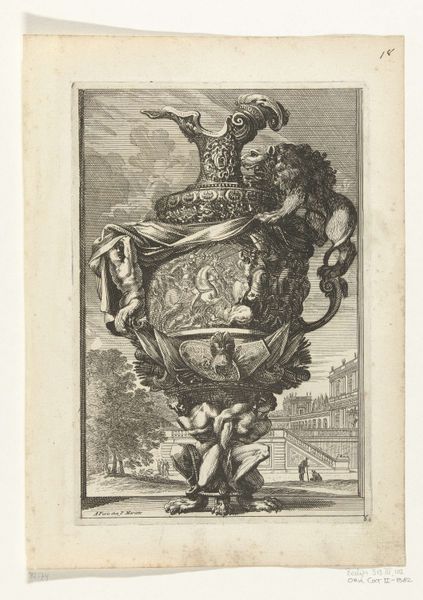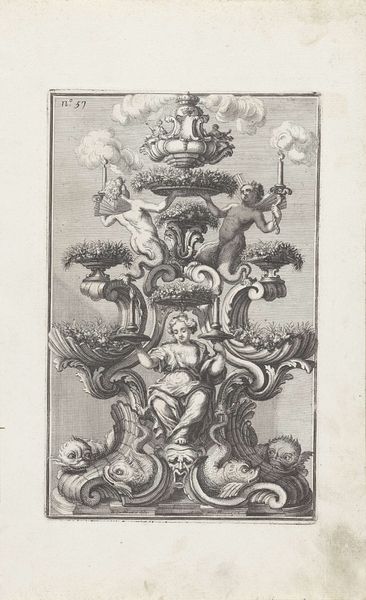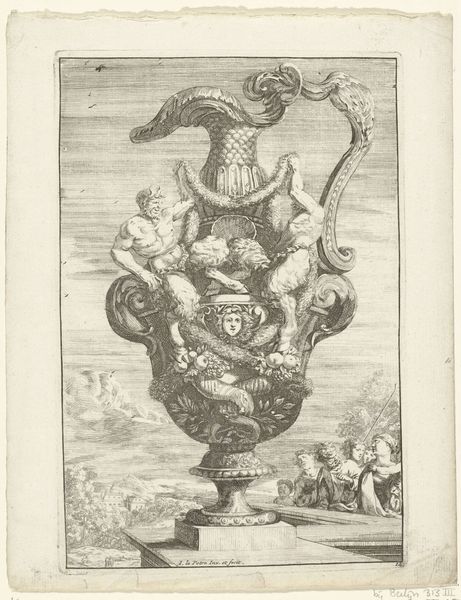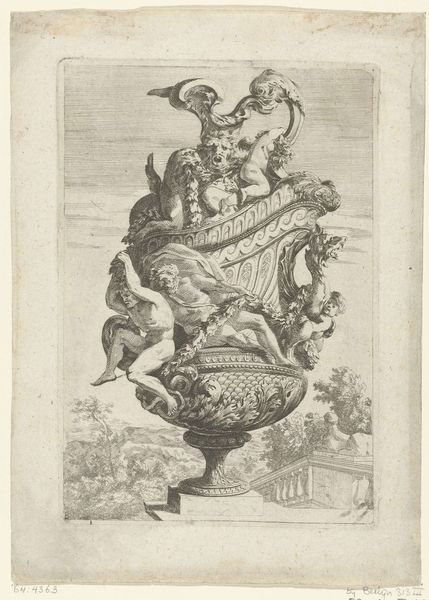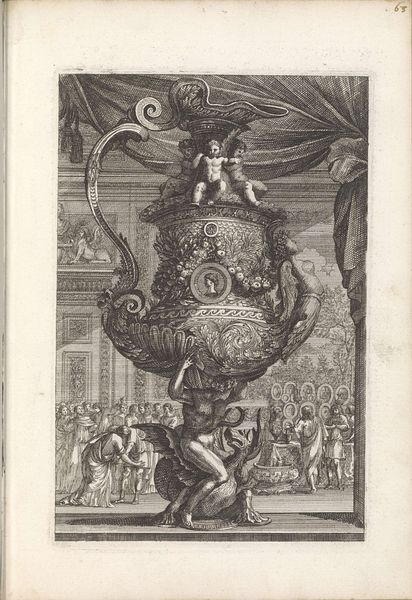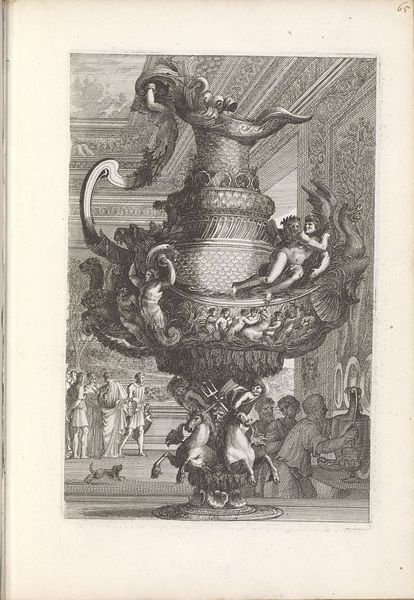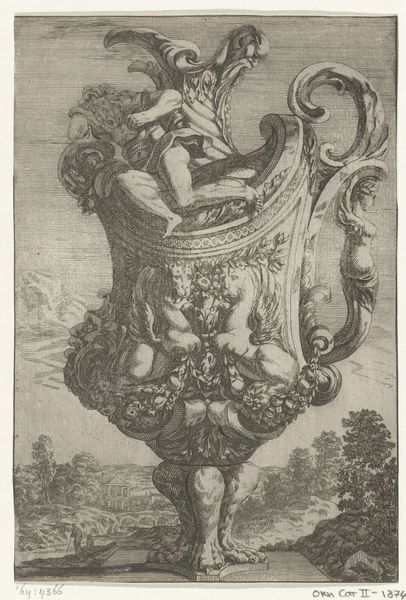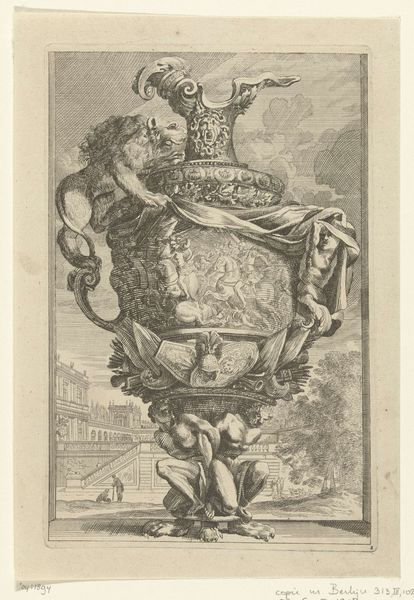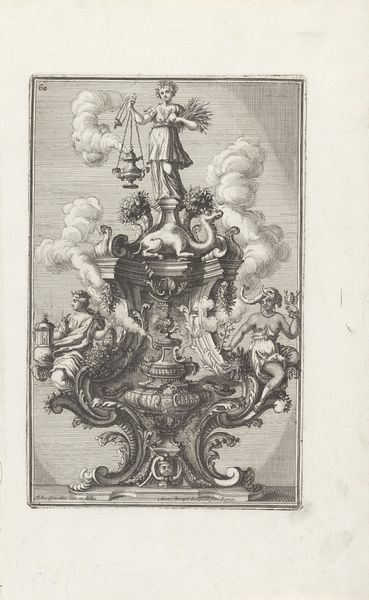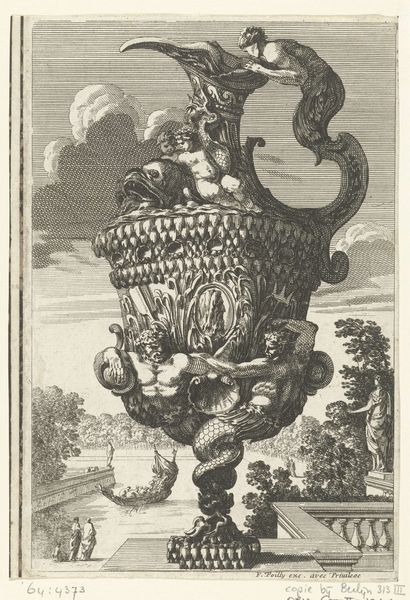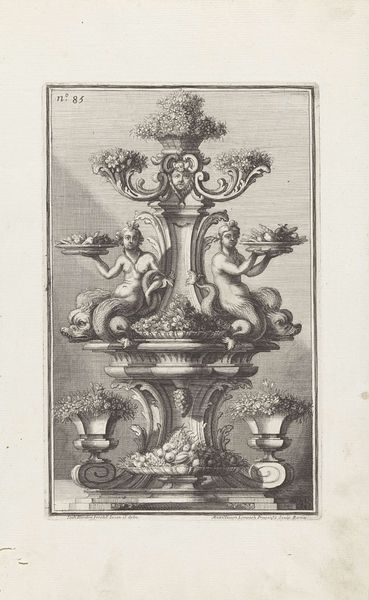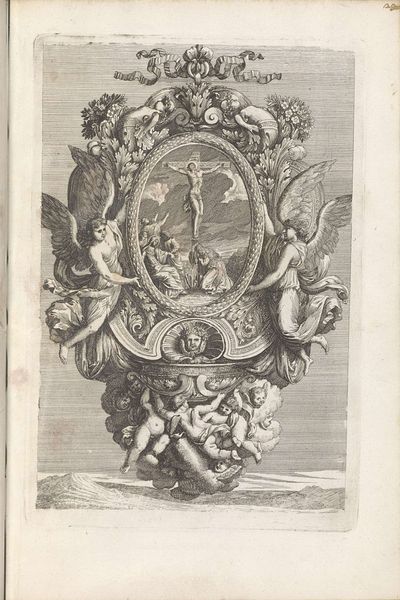
drawing, print, metal, engraving
#
drawing
#
baroque
# print
#
metal
#
pen sketch
#
pencil sketch
#
form
#
pen-ink sketch
#
line
#
pen work
#
engraving
Dimensions: height 217 mm, width 143 mm
Copyright: Rijks Museum: Open Domain
Curator: This engraving, created between 1659 and 1678 by Franz Ertinger, is titled "Schenkkan met een leeuw als handvat"—or "Pitcher with a lion as a handle". It’s currently held in the Rijksmuseum. Editor: It looks like an overwhelming celebration of… excess? There's a muscular lion draped over the top, an epic battle scene swirling around the body, and is that pair of figures at the bottom straining under the weight of the entire object? The details are intense. Curator: Indeed! Ertinger was working during the Baroque period. Aristocrats wanted to show power and wealth, commissioning complex works like these ornamental designs which emphasized the richness and sophistication of the patron. Engravings like these also circulated as models for craftsmen. Editor: It’s fascinating to think about this design not just as an image, but also as a pattern to be physically reproduced. The engraving, through its precise lines, dictates how metal workers might shape a pitcher, influencing their labor and the consumption habits of wealthy patrons. Curator: The piece itself tells us much about 17th-century European power dynamics. Lions were often symbols of royalty and authority, especially in Northern Europe. Here, it literally rests atop a container ready to serve at courtly functions. Editor: Right, that labor question again. The design almost seems intentionally impractical; the handles barely there, that giant lion disrupting any potential pouring. The level of hand skill required both to design and then realize this is mind-boggling; this shows how labor is commodified. Curator: The war scene and other symbolic elements work together, portraying a court culture deeply connected to ideas of classical antiquity, martial prowess, and, importantly, a clear social hierarchy. All meant to be consumed publicly as affirmation of those ideals. Editor: For me, examining its construction is critical; this work is intended to influence those commissions and labor investments, not purely on its historical position. How it gets made determines what it will symbolize. Curator: Considering its role as both an artwork and an instruction guide provides very useful context to assessing its impact, in its own time, and ours. Editor: Absolutely, recognizing both its design ingenuity and its production constraints makes the experience richer and provides some perspective.
Comments
No comments
Be the first to comment and join the conversation on the ultimate creative platform.
